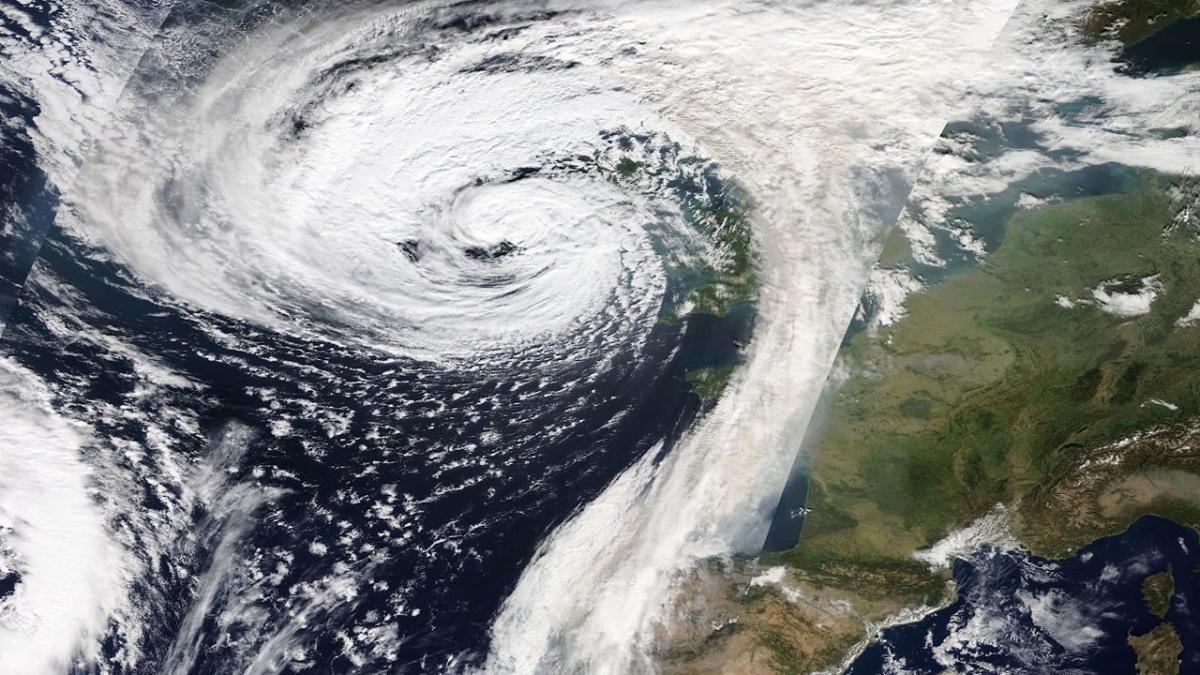
La squall Barbara It was the second named of the 2020-2021 season. The name proposed by the state meteorological agency (AEMET) on Sunday, October 18 at 09:30. Its origin is due to the issuance of some warnings of wind gusts going from the orange level valid for the 20th from 16:00. Although at the time of his appointment he still did not know generated, in the last hours of Monday he began to train.
In this article we are going to tell you everything you need to know about the storm Barbara, what was the amount of rainfall it left, the gusts of wind, etc.
Squall Barbara

During the 20th and early hours of the 21st, the storm Barbara crossed the Peninsula from southwest to northeast, leaving a large amount of rainfall, especially in the western half of the Central system, and very strong gusts of wind, even hurricanes, in the mountainous areas of the North. It was found that at the southern end of a broad squall that encompassed much of the North Atlantic Ocean the subtropical wet stream was being fed. It is here where a secondary vortex was formed, which when interacting with a polar jet of high levels, gave rise to the storm Barbara.
At 00 UTC on October 20, the center of Barbara was located somewhat west of Madeira. During the next day it moved rapidly in a northwesterly direction. At 12 noon they were in Lisbon and at 00 on October 21 they were in the Cantabrian Sea. The normal thing in a storm is that the center will have a lower atmospheric pressure. In this case, although the pressure in the center was not very low, around 990hPa, it was his moment of deepening. The strong pressure gradient that served as it passed through the peninsula after a center and the high pressures that were in Europe and the Mediterranean was what caused the strong winds with great gusts.
Wind gusts and precipitation

The gusts of strong winds were even hurricanes in a band that ranged from Huelva to the central Pyrenees. All the fronts associated with the storm Barbara crossed the entire peninsula in a southwest to northwest direction. He had a slow move east. Thus, there was a continuous and intense flow from the southwest which favored an accumulation of large amounts of precipitation. The southern slopes of the western peninsular mountain systems are where there was the greatest amount of rainfall. The maximum occurred in the Central system. Due to the high rainfall, up to 300 mm in just 24 hours. In the Mediterranean area of the Balearic Islands, rainfall was practically nil.
The extreme of the cold front speaks with the entire Canary Islands during the afternoon of October 20. In the Canary Islands, significant rainfall was also left, although with much lower values than those recorded in the peninsula. During the 21st, Barbara continued to move rapidly northward, until merging, in the afternoon of that day, with the main center of the great Atlantic storm between Great Britain and the North Sea, to later go to Scandinavia. Although on peninsular Spain the low pressures and the rainfall and winds continued, no longer so intense, It can be said that the effects directly associated with Barbara ceased during the early hours of the 21st.
Rainfall in the western part of the central system was particularly intense and long-lasting. If the usual climatic interval of 7 to 7 hours is taken into account, the 301 mm recorded in Puerto El Pico (Ávila) stand out from 20 or 312 mm, which is the largest of the series of seasons. Garganta la Olla, Hervás, Piornal, Madrigal de la Vera, Hoyos, Tornavacas and Valverde del Fresno in Cáceres not only broke the record for maximum accumulated precipitation in October for 1 month, but also almost all of them.
The all-time record doubled. In addition, there were torrential showers, such as 21 liters in just 10 minutes in El Paso (La Palma), 12 in Alosno (Huelva) and 11 in Fuente de Cantos (Badajoz).
Warnings and alerts of the storm Barbara

An orange warning was issued for gusts with wind speeds greater than 90 or 110 km / h. Depending on the region, the period of validity of the storm was between October 20 and 21. It covered almost all the mountainous areas of the northern half of the peninsula, including the Sierra de Toledo. The entire central system, Sierra de Tabria, the Iberian system of Burgos, Soria and La Rioja, the western and central Pyrenees, the center of Navarra and the Cantabrian slope, and the entire Basque Country (except the coast).
The central systems of Salamanca, Cáceres, Ávila, Segovia and Madrid, as well as the Cantabrian Mountains of León, Zamora and Palencia and most of them, in 12 hours accumulated rainfall greater than 80 mm. An orange alert level was also issued in Huelva, and an hourly precipitation advisory of more than 30mm was also issued.
The wind was one of the protagonists of the storm. There were strong gusts in almost the entire territory, which stood out in the west and north. These areas had an orange level warning of more than 100 km / h. The strongest gusts occurred in high mountains, and their wind speeds exceeded 120 km / h on Tuesday night.
The first rain associated with this low pressure system had already appeared in the northwest at the end of this Monday. Galicia, the westernmost point of Castilla y León, and the mountainous areas of Asturias and Extremadura will be areas where the rains will arrive earlier. In the gray sky and the days of heavy rain, the drop in temperature and the wind created an even more unpleasant environment.
As you can see, the storm Barbara is one of those that, with little notice, has broken important records. I hope that with this information you can learn more about this storm and its characteristics.